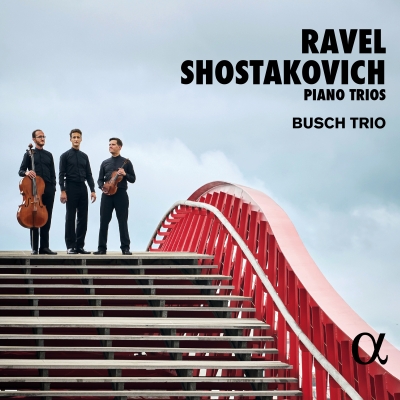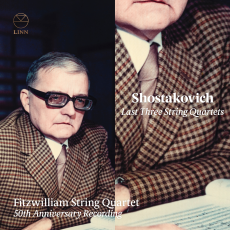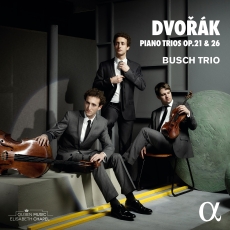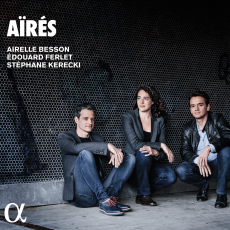Ravel & Shostakovich: Piano Trios
Ravel & Shostakovich: Piano Trios

Choose quality
Studio Master (192) FLAC
- Studio Master (192) ALAC
- Studio Master FLAC
- Studio Master ALAC
- CD Quality FLAC
- CD Quality ALAC
- MP3
- Piano Trio, M. 67: I. ModéréComposer(s) Maurice RavelArtist(s) Busch Trio
Piano Trio, M. 67: I. Modéré
09:25$3.50 - Piano Trio, M. 67: II. Pantoum. Assez vifComposer(s) Maurice RavelArtist(s) Busch Trio
Piano Trio, M. 67: II. Pantoum. Assez vif
04:13$2.30 - Piano Trio, M. 67: III. Passacaille. Très largeComposer(s) Maurice RavelArtist(s) Busch Trio
Piano Trio, M. 67: III. Passacaille. Très large
08:02$3.50 - Piano Trio, M. 67: IV. Final. AniméComposer(s) Maurice RavelArtist(s) Busch Trio
Piano Trio, M. 67: IV. Final. Animé
05:30$2.30 - Piano Trio No. 2, Op. 67: I. Andante. ModeratoComposer(s) Dmitri ShostakovichArtist(s) Busch Trio
Piano Trio No. 2, Op. 67: I. Andante. Moderato
06:45$2.30 - Piano Trio No. 2, Op. 67: II. Allegro con brioComposer(s) Dmitri ShostakovichArtist(s) Busch Trio
Piano Trio No. 2, Op. 67: II. Allegro con brio
02:46$2.30 - Piano Trio No. 2, Op. 67: III. LargoComposer(s) Dmitri ShostakovichArtist(s) Busch Trio
Piano Trio No. 2, Op. 67: III. Largo
04:53$2.30 - Piano Trio No. 2, Op. 67: IV. Allegretto - AdagioComposer(s) Dmitri ShostakovichArtist(s) Busch Trio
Piano Trio No. 2, Op. 67: IV. Allegretto - Adagio
10:12$3.50
Total running time: 51 minutes.
Album information
The Busch Trio brings together two heart-rending works: Ravel's Piano Trio M67 and Shostakovich's Piano Trio No.2, op.67.
Ravel composed his Piano Trio M67 just before enlisting voluntarily in the First World War. Inspired by the Basque country and its zortziko dance, the Trio ends with a sombre, almost anguished fourth movement. A mood inspired by the impending war? In his Piano Trio No.2, op.67, Shostakovich too is affected by the horrors of war and the death of a close friend. For the first time in the Russian composer’s output, we hear a Jewish theme, a danse macabre echoing the terrible events of the time. Another point in common between the two works is that both include a passacaglia. For the Busch Trio, it was self-evident that these two works should be brought together on the same album.




